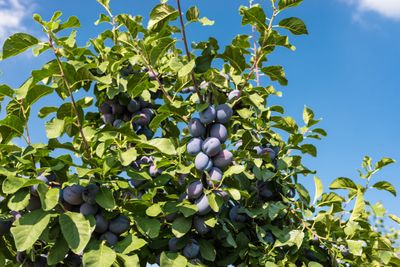Czar Plum Tree Info
Czar plum trees have an interesting lineage. It is a cross between Prince Engelbert and Early Prolific. Samples of Czar plum fruit were sent to Robert Hogg in August 1874 from the growers, Rivers of Sawbridgeworth. This was the first year of the trees’ fruiting and was yet to be named. Hogg named the plum fruit Czar in honor of the Czar of Russia who made a momentous visit to the UK that year. The tree and fruit caught on and became a popular staple in many an English garden due to its hardy nature. Czar plums can be grown in a variety of soils, in partial shade, and the blossoms have some resistance to late frosts. The tree is also a prolific producer and is one of the earliest producing culinary plums. Czar plums are large, dark black/purple, early season fruit. They can be eaten fresh if allowed to fully ripen, but that is not their primary use. Although palatable fresh, they really shine when made into preserves or juiced. The interior flesh is yellow with a cling freestone. On average, the fruit is 2 inches (5 cm.) long and 1 ½ inches (3 cm.) across, just slightly larger than the average plum. The tree size is dependent on the rootstock, but also on growing conditions. Generally, trees are between 10-13 feet (3-4 m.) for a tree that has not been pruned to 8-11 feet (2.5-3.5 m.) for a pruned tree.
How to Grow a Czar Plum
Czar plums are self-fertile but will yield better and produce larger fruit with another pollinator nearby. That said, it doesn’t need another tree, and it will be quite fruitful on its own. It does well in cooler climates and, as mentioned, is unfussy regarding its soil. Plant Czar plums in full sun to partial shade areas. Dig a hole that is as deep as the root ball and a bit wider. Gently loosen the roots and place the tree in the hole. Back fill with a mixture of half garden soil and half compost.
Czar Plum Tree Care
Depending upon weather conditions, plan to provide the plum with one inch (2.5 cm) of water per week. Unlike other fruiting trees, plum trees should be pruned when they are fully leafed out. The reason for this is if you prune a plum when it is dormant, it may become infected with a fungal infection. Prune a new tree immediately upon planting unless it is winter. Generally, plan to prune once a year from late spring to the end of July. The idea is to create a wine goblet shape that allows air and light to penetrate the canopy and also makes the tree easier to harvest. Remove any crossing, damaged or diseased branches as well. Plum trees are notorious for the copious quantities of fruit they produce. Too much fruit has its price, though, and can result in broken branches that make way for insects and disease. Thin the crop so the tree isn’t too overburdened. Mulch around the tree, taking care to keep the mulch away from the trunk to retard weeds and retain moisture. Before laying the mulch, fertilize the tree with an organic blood meal, fish meal or bone meal in the spring and then lay the mulch. Keep an eye out for insects. Czar plum trees are susceptible to all of the insects as other plums. In the case of Czar plums, there is one particular insect that attacks this cultivar. Plum moths love Czar plums and can wreak havoc on the fruit. Signs of this are small pinkish maggots inside the plums. Unfortunately, this is an insect that is particularly difficult to control. Plums, in particular the Czar plum, are comparatively easy to grow and require very little attention. The tree will crop in 3-4 years from planting and at maturity, 6 years, will reach its full cropping potential.
